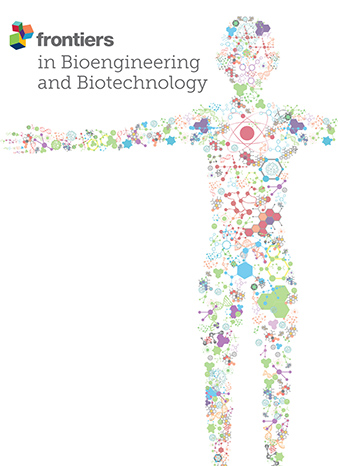Ginger-derived exosome-like nanoparticles: a representative of plant-based natural nanostructured drug delivery system.
IF 4.8
3区 工程技术
Q1 BIOTECHNOLOGY & APPLIED MICROBIOLOGY
Frontiers in Bioengineering and Biotechnology
Pub Date : 2025-06-04
eCollection Date: 2025-01-01
DOI:10.3389/fbioe.2025.1569889
引用次数: 0
Abstract
In recent years, the research on plant-derived exosome-like nanoparticles (PELNs) has attracted increasing attention. Among these, ginger-derived exosome-like nanoparticles (GELNs) stand out due to their specific pharmacological activity and their role as reliable carriers for delivering both hydrophilic and hydrophobic drugs, as well as small RNAs, making them a noteworthy representative of plant-based natural nanostructured drug delivery systems (DDS). In this review, we first introduce the characteristics and engineering methods of GELN-based DDS to brush up on our current understanding and then focus on research progress to summarize their therapeutic application scope and challenges.
姜源性外泌体样纳米颗粒:以植物为基础的天然纳米结构给药系统的代表。
近年来,植物源性外泌体样纳米颗粒(PELNs)的研究越来越受到重视。其中,生姜衍生的外泌体样纳米颗粒(geln)因其特定的药理活性和作为递送亲疏水药物和小rna的可靠载体的作用而脱颖而出,使其成为植物基天然纳米结构药物递送系统(DDS)的值得注意的代表。在本文中,我们首先介绍了基于geln的DDS的特点和工程方法,回顾了我们目前的认识,然后重点介绍了研究进展,总结了它们的治疗应用范围和挑战。
本文章由计算机程序翻译,如有差异,请以英文原文为准。
求助全文
约1分钟内获得全文
求助全文
来源期刊

Frontiers in Bioengineering and Biotechnology
Chemical Engineering-Bioengineering
CiteScore
8.30
自引率
5.30%
发文量
2270
审稿时长
12 weeks
期刊介绍:
The translation of new discoveries in medicine to clinical routine has never been easy. During the second half of the last century, thanks to the progress in chemistry, biochemistry and pharmacology, we have seen the development and the application of a large number of drugs and devices aimed at the treatment of symptoms, blocking unwanted pathways and, in the case of infectious diseases, fighting the micro-organisms responsible. However, we are facing, today, a dramatic change in the therapeutic approach to pathologies and diseases. Indeed, the challenge of the present and the next decade is to fully restore the physiological status of the diseased organism and to completely regenerate tissue and organs when they are so seriously affected that treatments cannot be limited to the repression of symptoms or to the repair of damage. This is being made possible thanks to the major developments made in basic cell and molecular biology, including stem cell science, growth factor delivery, gene isolation and transfection, the advances in bioengineering and nanotechnology, including development of new biomaterials, biofabrication technologies and use of bioreactors, and the big improvements in diagnostic tools and imaging of cells, tissues and organs.
In today`s world, an enhancement of communication between multidisciplinary experts, together with the promotion of joint projects and close collaborations among scientists, engineers, industry people, regulatory agencies and physicians are absolute requirements for the success of any attempt to develop and clinically apply a new biological therapy or an innovative device involving the collective use of biomaterials, cells and/or bioactive molecules. “Frontiers in Bioengineering and Biotechnology” aspires to be a forum for all people involved in the process by bridging the gap too often existing between a discovery in the basic sciences and its clinical application.
 求助内容:
求助内容: 应助结果提醒方式:
应助结果提醒方式:


